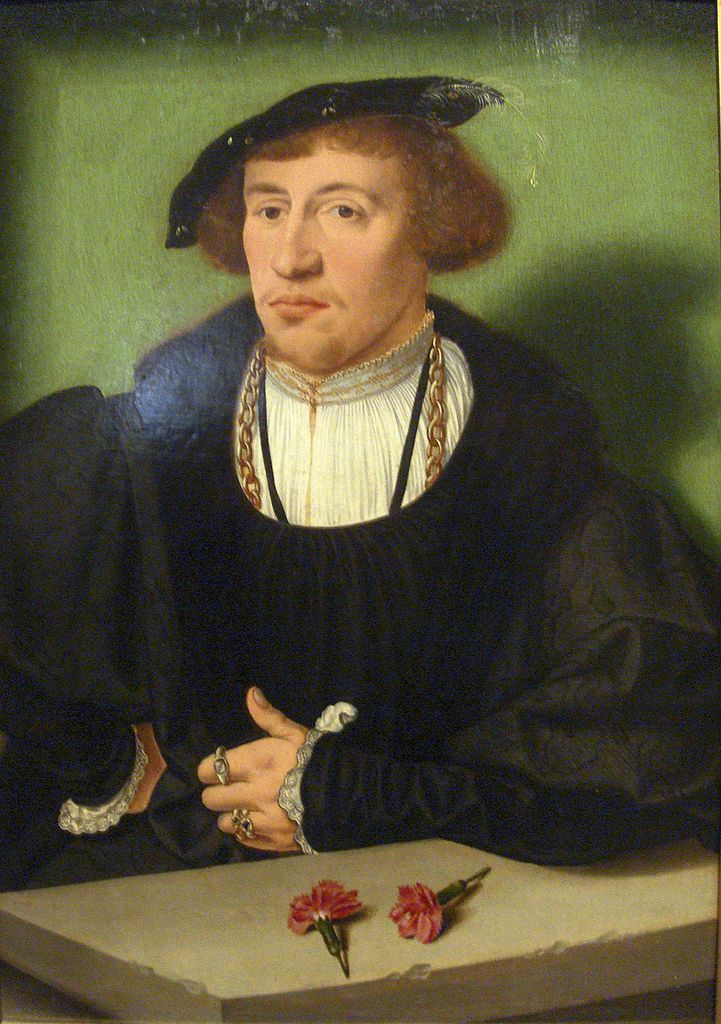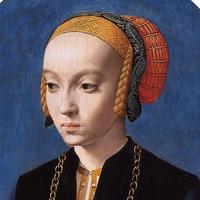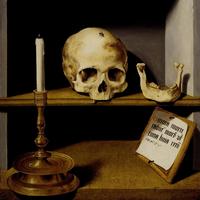More about Bartholomaeus Bruyn the Elder
Works by Bartholomaeus Bruyn the Elder

Contributor
They give this particular Bartholomäus Bruyn the name Bartholomäus Bruyn der Ältere (the Elder), so that we don't mix him up with his painter son, Bartholomäus Bruyn der Jüngere (the Younger).
Other versions of his first name are Barthel, Bartel de, and Bartold, so look out for those, too. His surname, depending on the sensibility and circumstances of the source, can be Bruyns, Bruen, Bruin, Brun, Brune, Bruns, or even Fuscus, for some reason. In those days, there was no spellcheck, and if there'd been spelling bees, they would have devolved into wanton sectarian mayhem.
Bruyn the Younger's work is even more neglected than his father's, partly because of the many centuries standing between us and them, but also because we generally choose to focus on other painters as emblematic of the time. For example, Bruyn the Elder's portraits, at first glance, remind you of Hans Holbein, with the distinct features and postures of clients saying "You better get me my money's worth!" But to study Holbein without looking at the "minor works" of both Bruyns is to neglect something specific that Bruyn was able to bring to his adopted city, Köln (Cologne to us Americans) on the banks of the Rhine.
From 1515 onwards, Bruyn lived and worked in the old part of the city, where he maintained a large workshop. According to historians of German art, Bruyn was instrumental in creating a style of Renaissance portraiture specific to Cologne's burgher class, the late-medieval bourgeoisie, that would influence Cologne artists for years to come. In 1533 he bought a house that once belonged to Gothic German painter Stefan Lochner and other artists after him, securing himself a spot (both physically and symbolically) in Cologne's art historical lineage. He was even elected to Cologne's city council! So, yeah, he was kind of a big deal in Cologne.
As mentioned above, the Anglicized name of Köln is Cologne, like the arguably aphrodisiac Eau de Cologne invented by Köln resident Johann Maria Farina in 1709 as a way to cover up the fact that you haven't bathed for quite a while, partly because clean water was hard to come by. The strictly moral Bruyns would have been shocked, if not bothered, by the association of their city's name with millions of hair-gel-wearing young men looking to mingle.
We don't know exactly where in the Lower Rhine Bruyn the Elder originated before he traveled to Köln around the age of twenty, but his hometown might have been Wesel, where he would have been close with his teacher and father-in-law, Jan Joest von Kalkar. Within a few years of his arrival in Köln, which we date by means of his earliest works in the area, he married Agnes Joest, with whom he had five children: Katharina, Clairgin, Arnt, Mathias, and Bartholomäus the Younger. Arnt and Bartholomäus Jr. became professional painters, while Mathias had some involvement with monasticism. Mathias would have made Dad proud by resisting the temptation to turn against Catholicism with the help of Martin Luther, who, according to author Annekatrein Löw, was caricatured by Bruyn the Elder as the nefarious personification of temptation in a commission for the anti-Protestant theologian Eberhard Billick.
As late as 1955, there was still no complete list of Bruyn's portraits. A catalogue raisonné is the definitive and complete inventory of an artist's works, and there are often debates as to which works belong in one—but a list of portraits should theoretically be a lot simpler to track due to the transactional nature of the commissions, so it is surprising that, for at least four centuries, nobody's had the chance to make one for Bruyn.
Sources
- Braunfels, Wolfgang. "Bruyn (de Bruyn, Bartold Bruin, Brunen, Bruns), Bartholomäus der Ältere." Deutsche Biographie, https://www.deutsche-biographie.de/sfz35395.html.
- Eggers, Friedrich. Deutsches Kunstblatt Stuttgart: Zeitschrift für bildende Kunst, Baukunst und Kunsthandwerk: Organ der deutschen Kunstvereine. Leipzig: Rudolph und Weigel, 1851.
- Goldkuhle, Fritz. Gemälde bis 1900. Pulheim, Germany: Rheinland-Verlag, 1982.
- Löw, Annekatrein. "Family Bruyn." Portal Rheinische Geschichte, http://www.rheinische-geschichte.lvr.de/Persoenlichkeiten/familie-bruyn….
- Löw, Annekatrein. Bartholomäus Bruyn: die Sammlung im Städtischen Museum Wesel. Wesel: Städtisches Museum, 2002.
- Steiger, Johann Anselm, and Ulrich Heinen. Golgatha in den Konfessionen und Medien der Frühen Neuzeit. Berlin: de Gruyter, 2010.
- Tuemmers, Horst Johannes. Die Altarbilder Des Älteren Bartholomäus Bruyn. Mit Einem Kritischen Katalog. Köln: Greven, 1964.
Featured Content
Here is what Wikipedia says about Barthel Bruyn the Elder

Bartholomäus Bruyn (1493–1555), usually called Barthel Bruyn or Barthel Bruyn the Elder, was a German Renaissance painter active in Cologne. He painted altarpieces and portraits, and was Cologne's foremost portrait painter of his day.
Check out the full Wikipedia article about Barthel Bruyn the Elder












